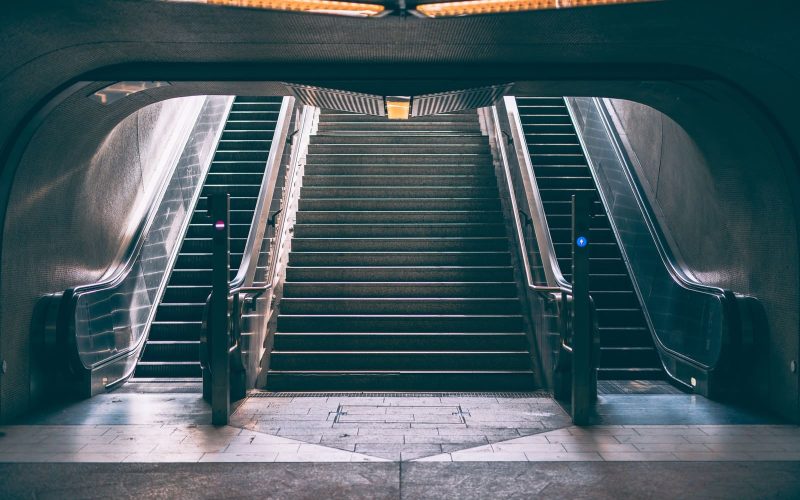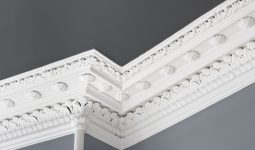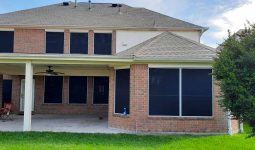This article discusses the different types of stairs you can use inside your home.
A staircase is necessary for any home with multiple levels, regardless of the different types.
The stairs you select for a building or remodeling project are also a crucial factor to consider.
It occupies different amounts of space in your home and offers particular aesthetic appeal.
Staircases can be designed in an almost infinite variety of forms and types to best suit the area, purpose, and aesthetic of your project.
Different stair architecture designs offer various visual appeals and occupy various floor spaces.
While some stair types are more frequent in residential settings, others are more frequent in commercial or industrial zones.
You can find a grand bifurcated or split staircase in elegant homes and buildings or as simple as a straight bolted access staircase.
Even a staircase’s components can change depending on the design or purpose.
For instance, you can use an open riser (the vertical portion of the stair) instead of a standard riser to create a more relaxed and spacious appearance.
Please read on as we discuss some of the different types of stairs.
1. Straight Stairs
Straight staircases are typically the easiest to build due to their straightforward design.
They don’t require exceptional support, making it simpler to install handrails and railings.
Straight stairs are affordable and straightforward to construct. Many builders use pre-cut risers and prefab metal stairs to cut costs because they are readily available.
Thinner treads, open risers, and metal stringers can make straight staircases more transparent than other stairs.
Last but not least, straight stairs are usually the simplest for a person to climb or descend.
2. Straight Stairs With Intermediate Landing
In this variation of the straight staircase, a central landing breaks up a large section of stairs.
This kind of staircase is mandated by building codes whenever a staircase needs to be taller than 12 feet.
The general benefits of this stairs style include being simple, straightforward, and easy to use—all qualities that straight stairs with no landing share.
Also, the intermediate landing serves as a resting area for people using the stairs.
3. Straight Stairs With Top Landing
The landing at the top of this style of straight stair extends to the floor. For additional flexibility in the stair arrangement, the stairs can run parallel to the floor with the landing at the top.
4. Half Turn Stairs
The half-turn has a sizeable footprint and can have an elaborate design. However, it does not make a switchback-style 180° turn.
There is a void between the upper and lower portions. This type can offer a landing or straight stairs.
5. Three-Quarter Turn
The staircase with the three-quarter turn has a complex layout. To construct such a design, a sizable amount of space is required.
It has multiple landings and is frequently found in houses with higher-than-average ceilings.
Also, to fit all of that under an 8-foot ceiling wouldn’t look good. This is one of the different types of stairs.
6. 180 Degree Turn
This design is very well-liked because it effectively saves space by doubling.
Technically, it’s also a reasonably straightforward style to build (relative to bifurcated or winding, for example).
The drawback of this is that the staircase isn’t particularly grand. For example, unlike with a winding or bifurcated staircase, you don’t get a view of the lower area as you descend.
7. Spiral Stairs
A secondary staircase is ideal for the spiral design. It has a space-saving design that also has a cool appearance.
The drawback is that climbing up or down is difficult. It’s pretty precarious.
Attached to the middle pole are the steps. These can be produced using metal or wood.
Furthermore, the Spiral Staircase’s design is centered on a pole, and when viewed from above, it appears to form a perfect circle. Clumsy is not allowed in this area.
Although small, it is challenging to navigate. They are ideal for small spaces like beach houses and urban apartments.
The stairs do not require additional support, so the center pole and landings are their structural support.
Its disadvantage is that only one person can move through it at a time because the inner portion of each step is steep, and the footing requires caution. Moving objects up the spiral staircase is also challenging.
8. Curved Stairs
The winding style embodies grandeur. The staircase and the wall it rests against are curved because curves always make for more complex designs. This is one of the different types of stairs.
The continuous curved staircase creates a helical arc and offers stunning architectural views. It does not form a complete circle but has a larger radius.
It enhances a home’s elegance and is always there to make an excellent first impression. When they have a wider radius, they are simpler to maneuver.
They are the most complex type to construct, though. A curved staircase represents the pinnacle of success for any builder or fabricator, so it is the most expensive to build compared to other types.
9. Bifurcated Stairs
A luxurious staircase is always bifurcated. It occupies the most significant area and makes a grand entrance. Undoubtedly, the design is imposing.
Consider this type if you have a sizable foyer that can accommodate it because it would look ridiculous in a small area.
10. L Shaped Stairs
An L-shaped staircase is a straight staircase with a turn or a bend. It may be in the center of or close to another end.
Although it is not always the case, the bend is typically 90 degrees. Due to the landing’s proximity to the top or bottom, it is also referred to as a quarter-turn stair.
Because of its wider landing, an L-shaped staircase takes up less space and is simpler.
Because of the breaking barrier, it is aesthetically pleasing and provides privacy.
The central landing lessens the number of treads a person can fall on, making it safer.
11. Ladder Stairs
You can use the ladder staircase to gain access, but building regulations prohibit them from being used as the main entrance.
They are primarily found in residential homes as a connection to the kitchen.
This is because they make better use of the limited space to facilitate movement.
Lofts, docks, and libraries can all use ladder stairs. Due to their designs, they are both the most economical and compact way to move between floors.
Additionally, ladder staircases might be on wheels or fold up to make them easier to store when not in use or to limit movement.
Their disadvantage is that they are challenging to maneuver when descending.
12. Winder Stairs
The Winder Staircase is an L-shaped staircase variation with triangular steps turning at the corner and a landing with a pie shape. You can replace rails with balustrades.
They are more typical in older homes and take up less room than other stairs. The winder staircase primarily serves as an additional set of stairs.
Since the main stairs are at the front of the house, they especially connect the backdoor movement or accessibility to the kitchen.
Furthermore, winder staircases have become popular in contemporary homes due to the way they create a smooth transition while winding around corners.
It is more alluring because of its compactness. However, it can be more challenging to maneuver than the L-shape.
Adding a handrail to winder-style staircases can be challenging and requires center support. This is one of the different types of stairs.
13. Cantilever Stairs
The stair treads on the Cantilever Staircase seem to be suspended in midair.
The other end holds a railing system or floats freely, while the treads are attached to one end with a metal frame by creating divets.
The stair stringer can be either exposed or hidden, depending on the owner’s preference. Because of this, they allow for character and openness.
Also, it is advised to check with the local code regulations as some configurations can be challenging to design.
However, one disadvantage of cantilever staircases is that the tread support must be made to support the weight of the people using the stairs.
Due to additional structural requirements, the stairs are more expensive than alternative designs.
14. Circular Stairs
The circular staircase is tapered and circles around. You modified it to add to its sleekness, even though it dates back to the Middle Ages.
The circular staircase is surrounded by glass rather than railings to enhance its beauty further. The wood is treated with Vanish to add luster and individuality.
Unlike spiral stairs, the steps of the helix staircase are easier to follow and more comfortable.
The helix staircase is another name for the circular staircase. It is appropriate for those who enjoy vintage items.
As the main concern is preventing warping on the wood, maintaining it is relatively simple. Its disadvantage is that it requires more space and is more expensive to construct.
15. Space Saving Stairs
The space-saving staircase is practical for a small home. In a smaller space, stairs with a steep pitch, a ribbon design, or that are narrower can be incorporated.
The voracious readers can use the area by building a library at the bottom of the stairs. They will have reduced the space needed while adding a little bit of elegance.
The area is further enhanced by proper lighting or natural light.
The reader who needs privacy may be disturbed as the other members use the stairs, which is the only drawback of the space-saving staircase. This is one of the different types of stairs.
16. Storage Stairs
Turn the overlooked space beneath the stairs into a storage area. Under the risers, cabinets can be constructed, or each riser can become a drawer.
Balustrades can be used in place of rails to improve the style and set it apart from other common types.
One can store essentials in the unused space under the risers, freeing up space for other things.
Furthermore, One can stockpile extra food or supplies for first aid emergencies, especially during the winter.
The storage staircase’s only drawback is that users must regularly inspect, clean, and maintain it if food items are stored to keep rodents and other pests out.
Additionally, lighting is required to improve safety. Avoiding moisture will help you prevent mildew and unpleasant odors.
17. Bent Metal Stairs
Metal that has been bent and wooden treads make up the stairs. The bent metal staircase is skinny and light yet strong and long-lasting.
The more daring people will enjoy these stairs because they give you an adrenaline rush as you go up them.
The architects explicitly created it to appeal to both your sight and mind. The metal improves its efficiency in terms of space and sleekness.
The disadvantage of the bent metal staircase is that it can produce metallic noises when people rush up or down the stairs, disrupting their calm.
Heavy people using the stairs frequently may alter their shape, causing them to sag downward.
Those who fear heights should not use the stairs because doing so will heighten their phobia.
Conclusion
The different types of stairs will vary depending on a person’s personality, financial situation, preferences, and tastes.
Straight stairs are preferable for young families with young children and elderly parents because they require less upkeep and are friendlier.
Straight stairs with a landing are necessary for a commercial building.
A person with an eye for elegance can include a cantilever or a curved stair. Also, a spontaneous or daring person could consist of a bent metal staircase.
Furthermore, you can include stairs with storage for large families or families with many young children.
People with a penchant for antiques can use circular stairs, while owners of large buildings who enjoy grandeur can use bifurcated stairs.
Space-saving stairs can be included for avid readers and players, such as football, golf, or hockey, to store their equipment.
One’s taste, preferences, and personality can be seen on the stairs.
Therefore, one must know their needs, preferences, and tastes before incorporating various types of stairs.
Making the stairs stand out also depends heavily on their upkeep.
One’s preference for a particular set of stairs can perfect and distinguish the interior design of a home.
One may choose to use a box or turn newels for newel posts. As good as a brand-new set of newel stairs are well-maintained and varnished newel posts.









It’s nice that you mentioned how a staircase is necessary for any home with more than one level, regardless of the different types. We are currently building our dream house and we’re at the part where we need to have the stairs installed. We need to think about the handrails along with the stairs, and we are thinking of asking for custom wood railings.